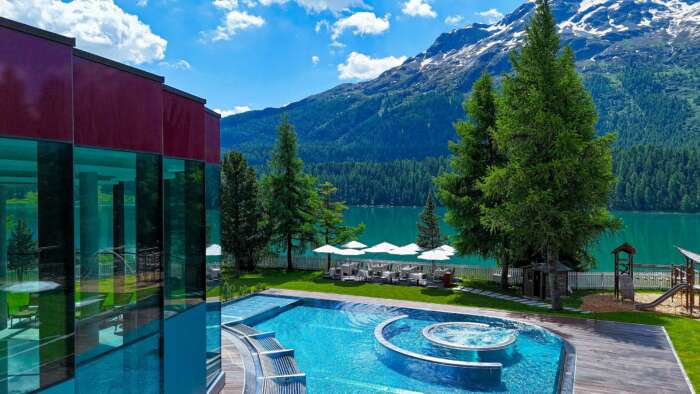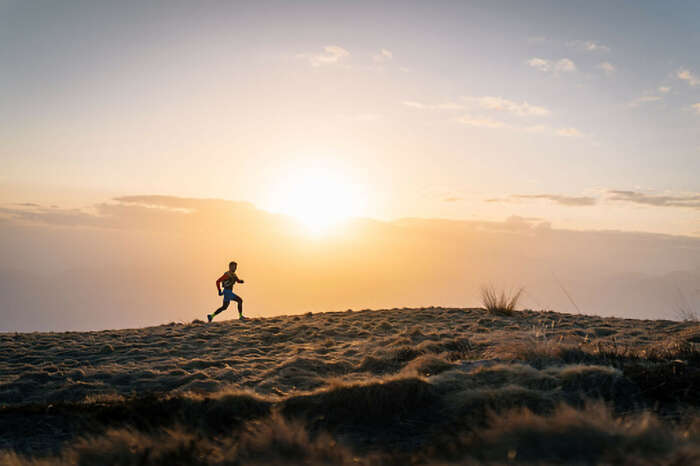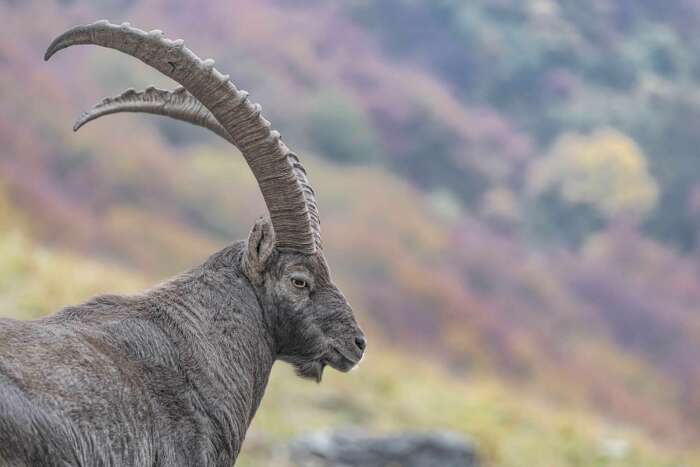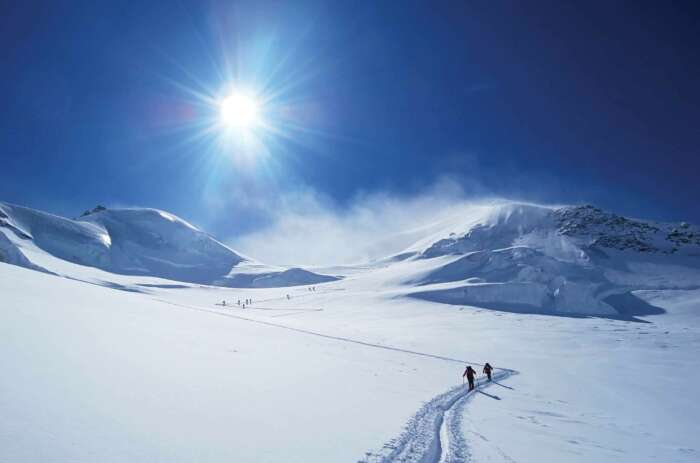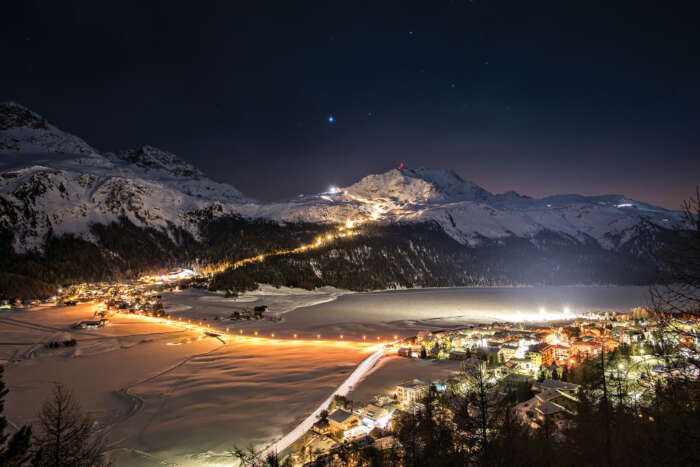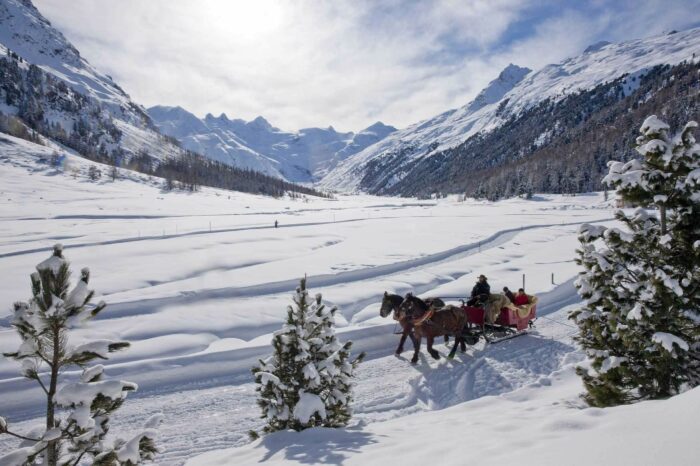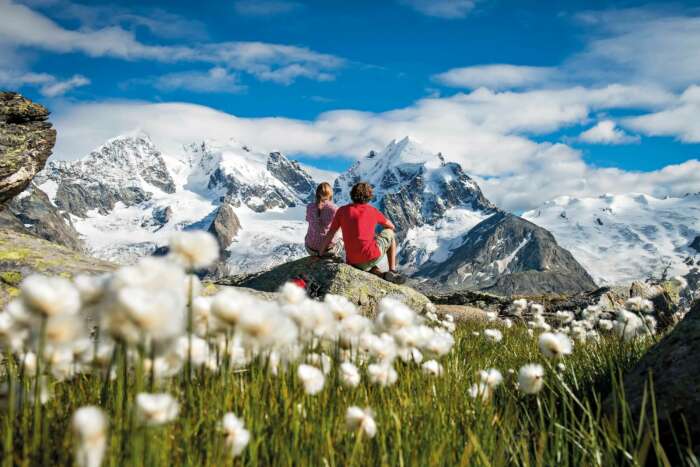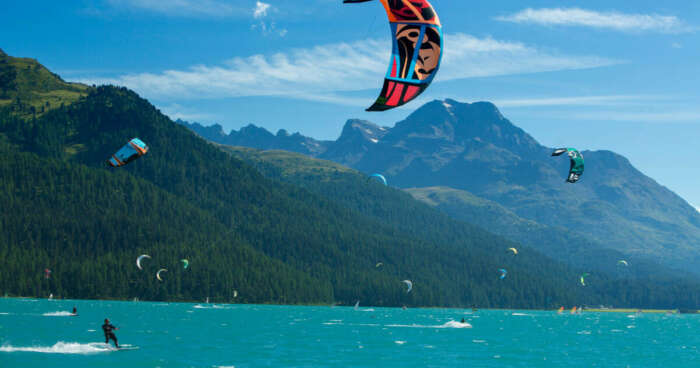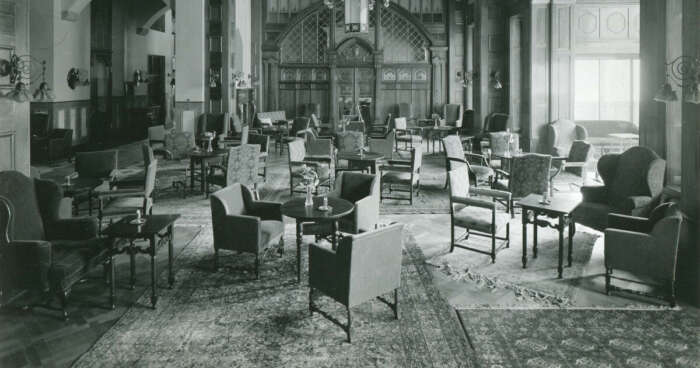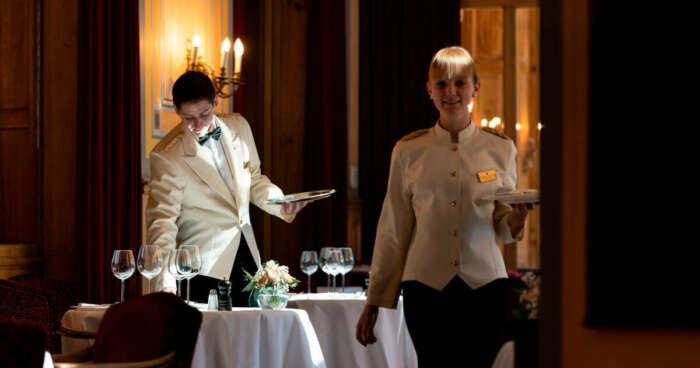My seat in the panorama carriage of the Bernina Express is like an armchair, deep and soft, but I’m stretching out of it towards the high convex window. Peering forward into the silver summer light, I squint at the cherry red engine pulling us along the narrow-gauge track. As it climbs out of St. Moritz, my eyes slide over the Bernina mountains, their 3,000-metre (9,843 feet) shoulders squashing shiny glaciers between towers of exposed granite. I gaze at rainbows of Alpine wildflowers tangled along the trackside – saxifrage, common lady’s mantle, thorny thistle and rock jasmine. There are caramel-coloured cattle chomping long grass, and hikers on the path beside the tracks wave to us. Suddenly, the iconic Morteratsch Glacier comes into view, an icy silver highway of such beauty it looks superimposed on a screen. And the little red engine leads gently on, diving in and out of night-black spiral tunnels as it climbs 416 metres (1,365 feet) in altitude in just 12 kilometres (7.5 miles).
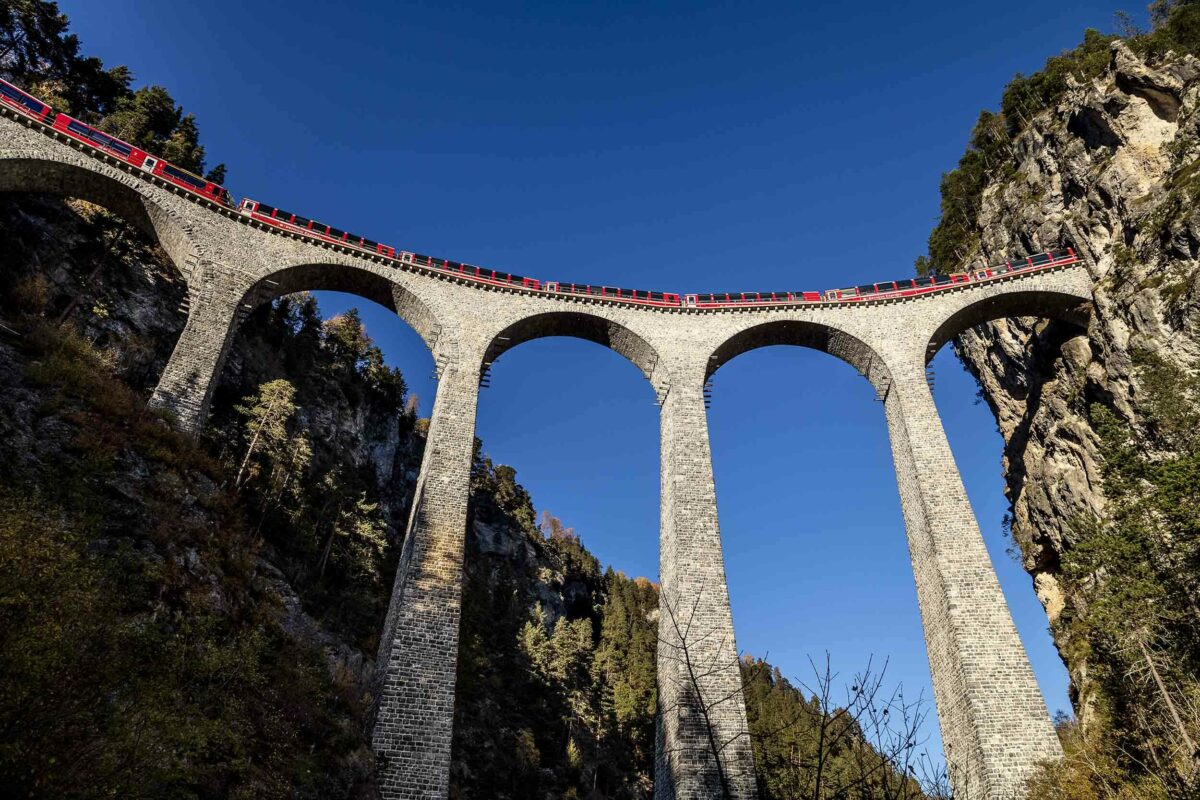
I’m on holiday in St. Moritz, staying at the Badrutt’s Palace Hotel, and I’m taking a day trip on a train journey I’ve heard so much about. As we travel, clickety-clacking along the UNESCO-listed Albula and Bernina lines, the carriage’s audio guide explains that to penetrate the canton of Graubünden’s twisty gorges, sheer rock faces and high mountain passes, the route features 55 tunnels and 196 bridges and viaducts, mainly built in the early 20th century. These examples of engineering genius are a hallmark of Switzerland’s Rhaetische Bahn network, which operates both the Bernina Express, across 122 kilometres (76 miles) from the medieval city of Chur in eastern Switzerland via St. Moritz to Tirano in northern Italy, and its sister service the Glacier Express, which connects Zermatt in the canton of Valais with St. Moritz.

“I’m from a small village near Disentis, on the Glacier Express route,” train manager Joe Bearth tells me as he passes by after I board in St. Moritz. The carriage, which carries up to 36, is an excited multilingual gaggle. Bearth has been working for the Rhaetian Railway for seven years and never tires of engaging with the international passengers the train attracts. “I love telling them about the railway, about the special construction some 120 years ago,” he says. Opposite me, a small party of German friends happily tuck into a platter of local cheese from the steward’s gourmet snacks trolley. A young Australian family buys a cuddly ibex from the gift shop trolley as it rattles past. At every turn, passengers grab their cameras. Nobody is scrolling on their phone, although the carriage is equipped with wifi.
There’s a collective intake of breath as we snake beside a duo of mountain lakes in swirls of aquamarine and turquoise. “Lago Bianco and then Lej Nair,” informs Bearth. This stretch of the railway over the Bernina Pass is the highest in Europe, at more than 2,253 metres (7,392 feet) above sea level. The service also operates in winter, when the tracks look like a cross-country skiing piste in a marzipan landscape. Today, it is bright and summer-crisp – warm sun, cold air – and the train creaks to a stop, at Alp Grüm, beneath the silvery tongue of the Palü Glacier. We have a five-minute photo stop.
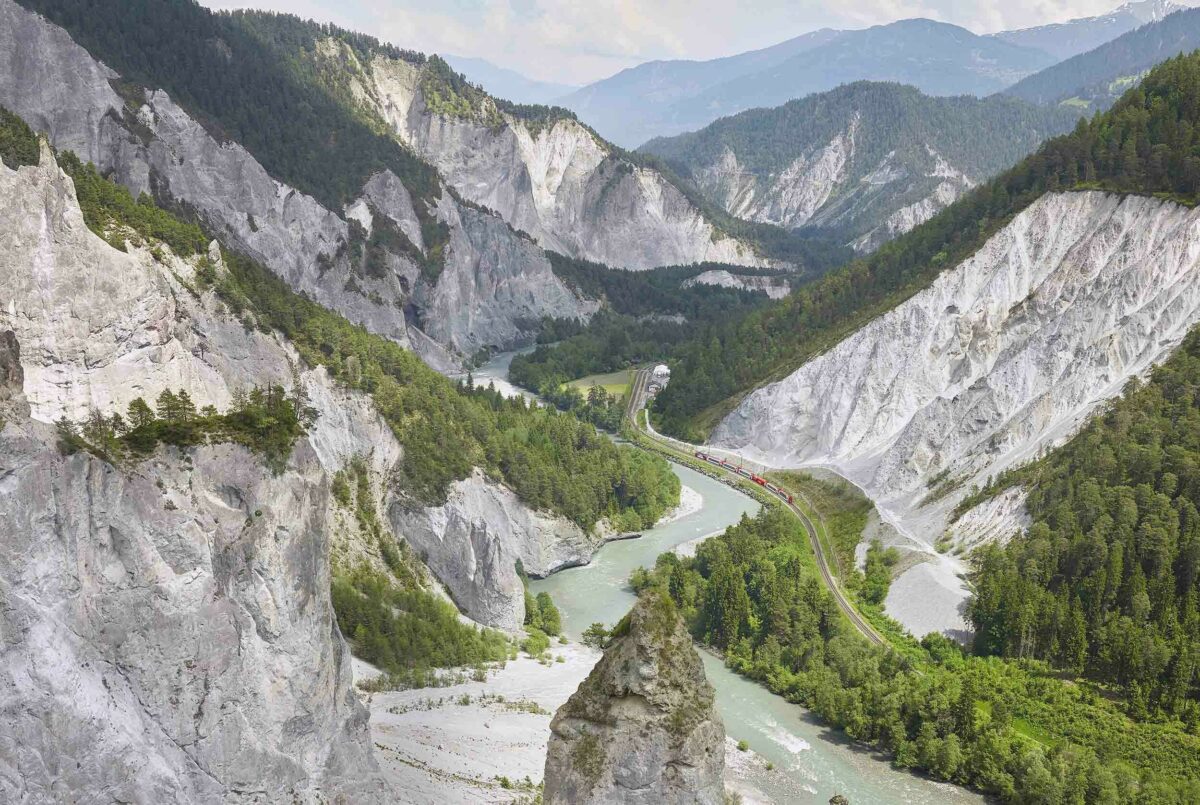
The Glacier Express climbs high too, although it makes its way very slowly. Dubbed “the slowest express train in the world”, it has an average speed of 39 kilometres per hour (24 miles per hour) and takes eight hours to cover 290 kilometres (180 miles). “But it’s not slow enough,” laughs passenger Carina Scheuringer, a photographer from Zurich. “Eight hours fly by as you marvel at the stunning mountain scenery and masterpieces of architecture from the heyday of the railway age.” She says the Landwasser Viaduct, which also features on the Bernina Express, is the absolute highlight. Where the Viamala Gorge scythes the mountains in two, six limestone arches hold the track 65 metres (213 feet) above the river, so far down it looks like a stream. The viaduct is the showpiece, but the entire journey captivates.
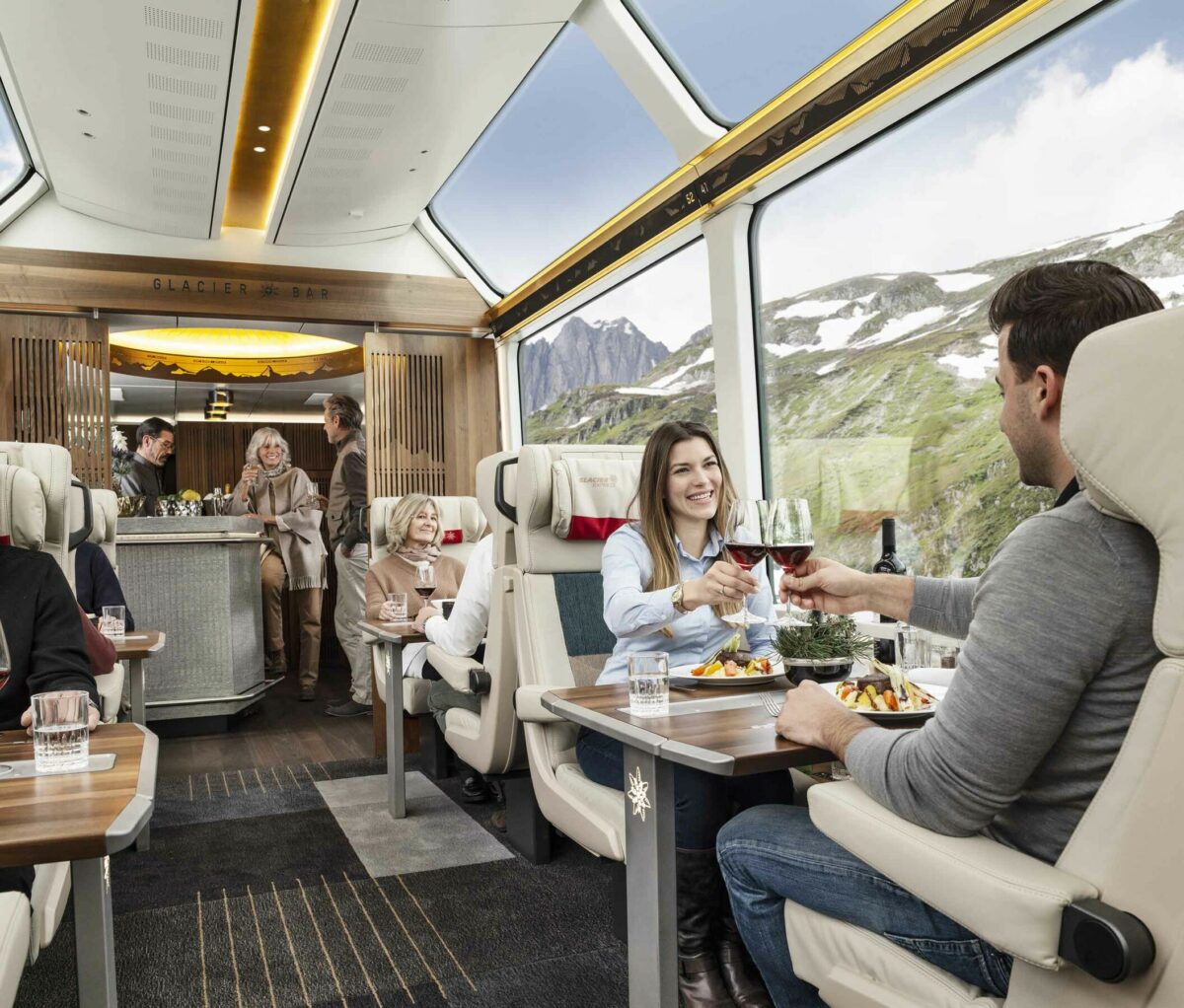
As Zermatt’s twisty Matterhorn fades into the distance, the Glacier Express navigates pine and larch forest, and pastures where cheese huts are scattered like toy bricks, bypassing countless hillside towns with turrets and spires. Then comes the Upper Rhone valley, where hamlets grip to steep slopes and lakes glimmer the colour of onyx. There’s a climb to the Oberalp Pass, at 2,000 metres (6,563 feet) above sea level, and soon afterwards, the Glacier Express disappears into the Rhine Gorge, Switzerland’s Grand Canyon, and the IMAX-screen-like windows play a reel of white rock formations some 350 metres (1,148 feet) high that were formed by a landslide 10,000 years ago.
While on board, you can order lunch – it might be Graubünden barley soup with air-dried beef or Bündner Capuns (Swiss chard wrapped around Spätzli dough) – with many of the ingredients sourced from the surrounding landscapes. Back in my seat on the Bernina Express, we have almost reached Tirano.
There’s just one more structural highlight – the mind-boggling Brusio circular viaduct that helter-skelters down a 360-degree spiral. And then come the agricultural folds of northern Italy. As we ease into town, where we will have two hours to enjoy a pizza on a piazza before the return journey, the tracks join the road and the little red engine squeezes along the main street. I peep down lanes of sand-coloured townhouses, look up at spires silhouetted against a bleached midday sky, and down at the book I brought to read, untouched on the table. The scenery in reverse will certainly be no less spectacular – and it’s all fitted perfectly into a six-hour day trip from St. Moritz, where I return to with incredible memories of a breathtaking journey.
For more information on booking the Bernina Express or Glacier Express, please contact the Concierge Desk at Badrutt’s Palace Hotel.

